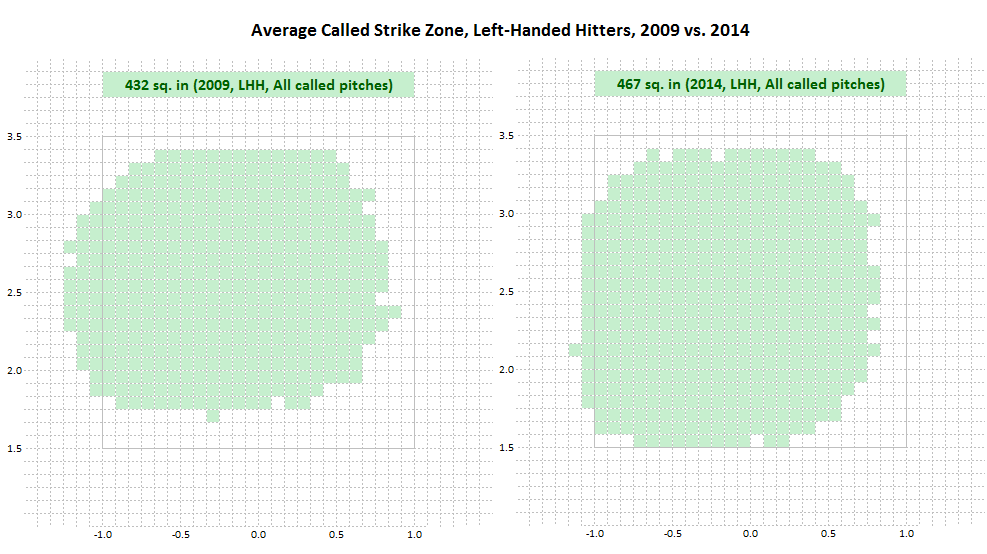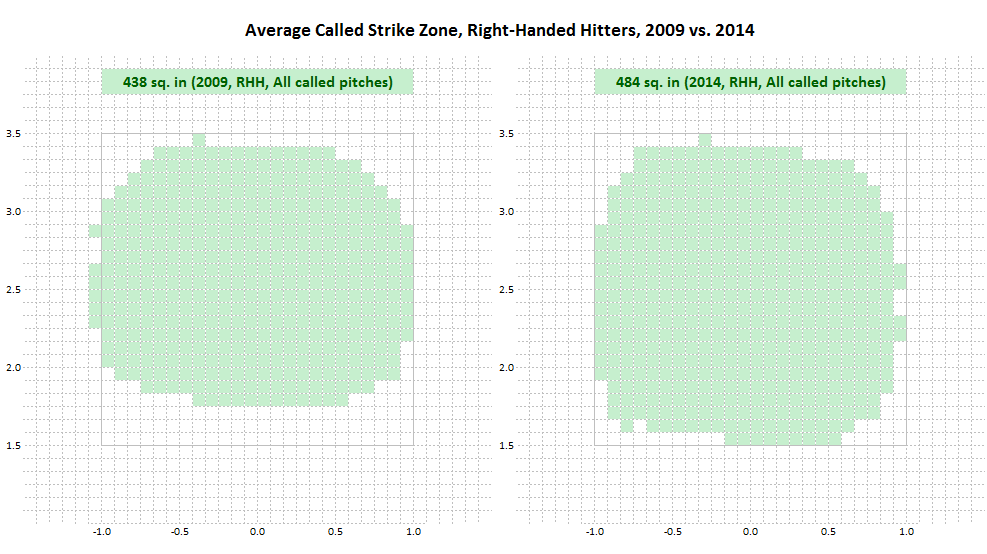Harry Hooper said:
I think changing a couple of lines of software code to raise the bottom of the zone for the systems that evaluate umpires is very easy
Doesn't the bottom of the zone depend on the location of the batter's knees, i.e. it's not fixed?
In addition to some parallax error introduced to the home plate umpire by the difference in a batter's positioning in the batter's box/batter's stance/height of the batter's knees, there may be some uncertainty introduced by batter's who wear baggy pants and who stand nearly upright.
And further compounding the problems in calling balls and strikes is that a 90-mph pitch travels 132 feet per second, which is 1584 inches per second. Home plate is 17 inches front to back, so the ball is over the plate for about 10 milliseconds (maybe 12 milliseconds since the ball decelerates on the way to the plate).
As for having automated pitch calling systems, it's not quite as easy as one thinks. The strike zone is three-dimensional and the rules say that "if any part of the ball passes through any part of the strike zone" it is a strike, so if the pitch is high by a millimeter when it enters the zone (front of the plate) but due to forces acting against the ball drops low enough to intersect the top of the zone before it passes the back edge of the plate, it is a strike. Your automated system needs to detect that.
I think the most you can rate an umpire on is consistency and in the pre-high-tech days that is what players asked for. If an umpire had a low or wide, high or low strike zone, they knew it and adapted. Measure the consistency of today's umpires and get rid of the inconsistent ones (if they can). Once they have a corps of consistent umpires, then they can start working on tightening their zones.


